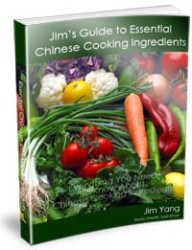New Fermenting Method Renatures Preserved Foods into Pickles — Canned Vegetables Now Made Probiotic-Rich with Kit from Perfect Pickler
Florida (PRWEB) January 13, 2014
Individuals nationwide have started to discover the benefits of pickling vegetables at home. Not only does fermenting produce provide beneficial bacteria and nutrients to the human body, but it preserves food for months which keeps down healthy food costs. However, some people do not have access to fresh, decent, raw cucumbers or vegetables which presents the question – is it possible to “pickle a pickle?” The answer is undoubtedly YES! It is possible to use off-the-shelf dill pickles and bring them back to life. Soaking the pickles in fresh water and then repacking them in a pickling kit along with fresh brine solution is able to create quality pickles with the best nutrients. How did this work; to bring a cooked food back to life? It makes sense considering that lactic acid fermentation—what drives fresh cultured pickling—feeds on the vegetable matter whether cooked or raw. Just like making yogurt by first cooking the milk and then culturing it; anyone can pickle preserved vegetables. This discovery allows individuals to take canned vegetables and reinvent them with probiotic life, spices, and a variety of recipes. Most importantly, renatured pickles are loaded with live cultures, enzymes, and boosted with vitamins and minerals—even more than when the veggies are raw. One of the chief reasons for renaturing is the chance to have an inexpensive daily bite or two of fresh pickles, which confers great health benefits. “Probiotics have a variety of functions in the GI tract including aiding the intestinal immune system and the intestinal nervous system, breaking our food into nutrients, blocking the bad bacteria, and promoting a healthy intestinal lining,” said gastroenterologist Karlee J. Ausk, M.D.
Growing a garden and creating a homemade pickle for pennies is now a clever way to add value to your cuisine. Gardeners and home canners can put up their produce as usual, and then convert them to live-cultured pickles on demand. The initial canning only needs to be the vegetable and water. There is no need to add the spices or herbs until they are renatured. Cucumbers can be canned naked and then turned into fermented Dill Pickles, or Cucumber Kimchi, or Persian Cucumbers, to name a few.
The Renaturing Method:
This type of pickling uses a canning jar kit or pickling crock that seals and keeps the recipe under the brine. A canning jar system, aka “jar top fermentor” was used for developing the renaturing method. The actual kit was the Perfect Pickler®.
Empty the contents of one quart of canned or jarred cucumbers into a strainer and rinse. Place in large bowl.
Mix in about four cups of raw, chopped vegetables—primarily onion, garlic, raw root veggies, and peppers (exclude red peppers—they’re too ripe).
Spice it up by adding a blend like Italian, pickling spices, chile powder, or a homemade blend.
Make a fresh brine dissolving 2 TBS. of unrefined sea salt with four cups of filtered water.
Optionally, add 4 TBS. of brine from a previous batch of lacto-fermented pickles to the brine. Or use liquid whey drained off yogurt. This provides a culture boost.
Pack the veggie mixture into two 1-quart, wide mouth jars or one half-gallon jar. By using two jars you can have a different spice blend for each quart. Fill the ingredients to about two inches from the jar lip.
Pour in the brine until almost full to submerge the ingredients.
Seal the fermentor per kit instructions.
In about four days, you have renatured, live-culture, enzyme-rich pickles. Refrigerate these finished pickles.
Here is a great starter recipe for renaturing veggies with easy-to-find ingredients.
Pickled Beets & Cabbage (Borscht) – 1 Qt.
This is an all-time favorite. The beet-cabbage flavor is sublime. This version uses canned beets and vegetable stock for quick fixing. This traditional dish from Eastern Europe produces a brilliant fuchsia color. Serve cold or hot with a dollop of sour cream and dill or chives. – Recipe by Bill Hettig
cabbage 1 cup coarsely chopped
beets, canned 2 15 oz. cans, unsweetened, no spices, rinsed
onion 1/2 cup sliced, soaked in cold water for 30 minutes
garlic 2 tsp. 2 medium, chopped
vegetable stock 2 cups low sodium, organic is a good choice
sea salt, unrefined 3/4 Tbsp. coarse, or 2-1/2 tsp. fine sea salt
peppercorns 1/2 tsp. lightly cracked or coarsely ground
aged brine 2 TBS. or whey from yogurt (optional)
1 Use a food processor fitted with a medium grating disc and process the cabbage, beets, onions, and garlic.
2 Make up the brine by combining the stock and salt.
3 Add cracked pepper to a one quart, clean, widemouth canning jar, then add vegetables, tamping lightly, until about 2 inches from the lip.
4 Add the brine until about a half-inch from the lip.
5 Seal according jar top fermentor instructions
6 After four days fermentation remove the kit and seal with two-piece canning lid and refrigerate. Flavors improve over time.
Bill Hettig has been teaching and fermenting since 1991 at his natural foods cooking school in Central Florida. He developed the Perfect Pickler to simplify brine fermenting for the home cook. Bill has been developing recipes for over twenty years. He started the Perfect Pickler company in 2004. Hettig lectures and hosts workshops around the country.
©Copyright 1997-
, Vocus PRW Holdings, LLC.
Vocus, PRWeb, and Publicity Wire are trademarks or registered trademarks of Vocus, Inc. or Vocus PRW Holdings, LLC.
 Fat Burning Kitchen:Never count calories again
Fat Burning Kitchen:Never count calories again Low Glycemic Veggies
Low Glycemic Veggies 100% protein quinoa grain
100% protein quinoa grain Daily Antioxidant/Natural Remedies
Daily Antioxidant/Natural Remedies Get Truth About Healthy Teeth
Get Truth About Healthy Teeth Healthy Cooking
Healthy Cooking
Leave a Reply
You must be logged in to post a comment.